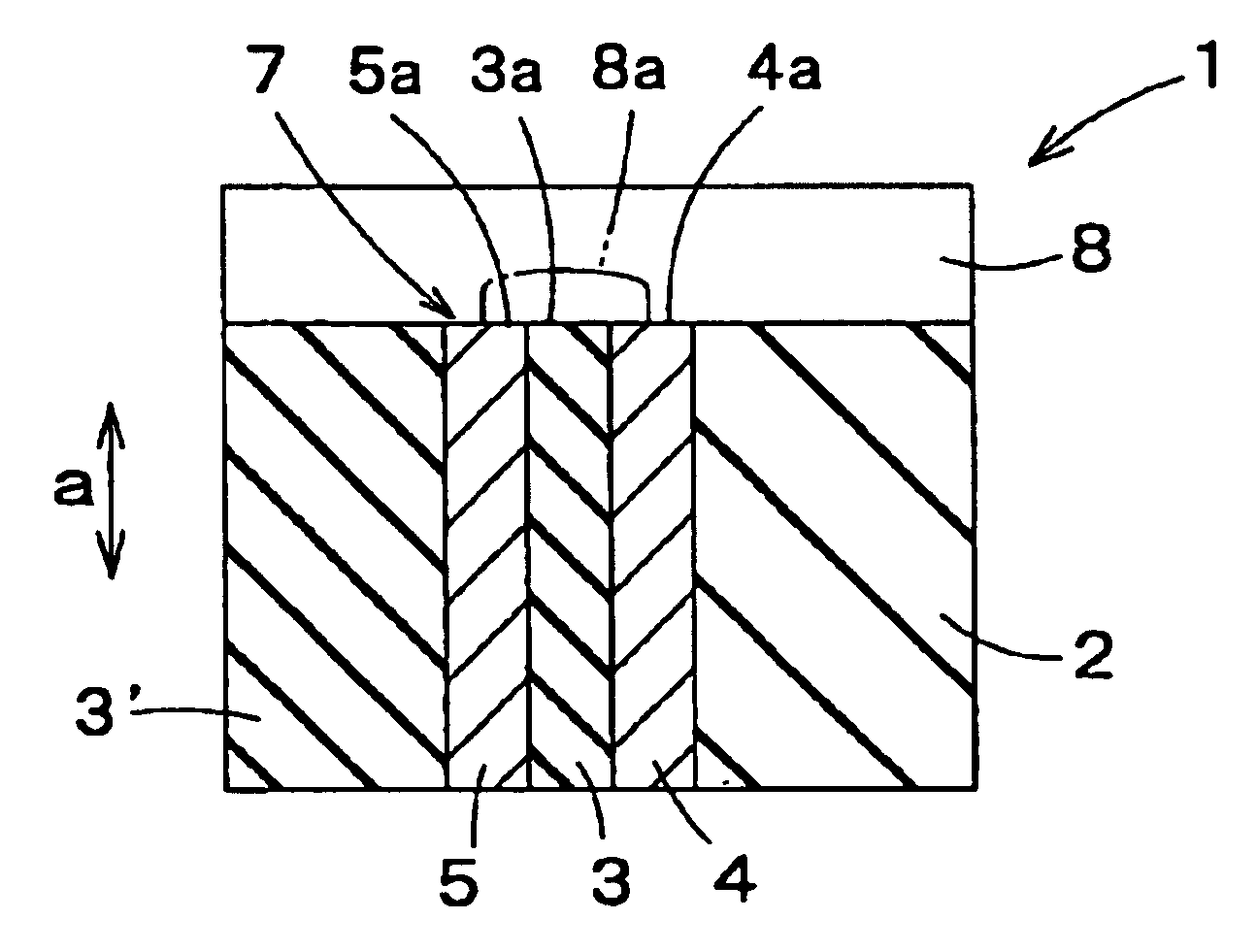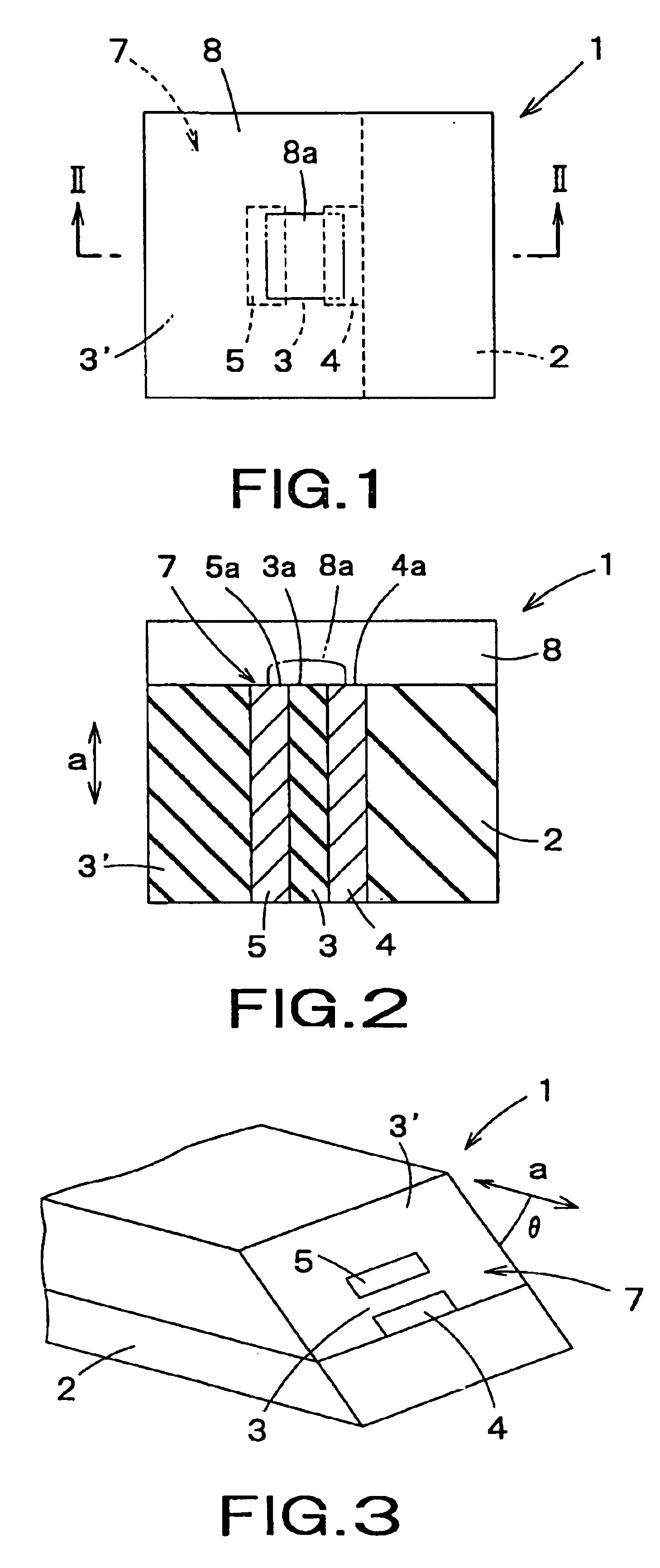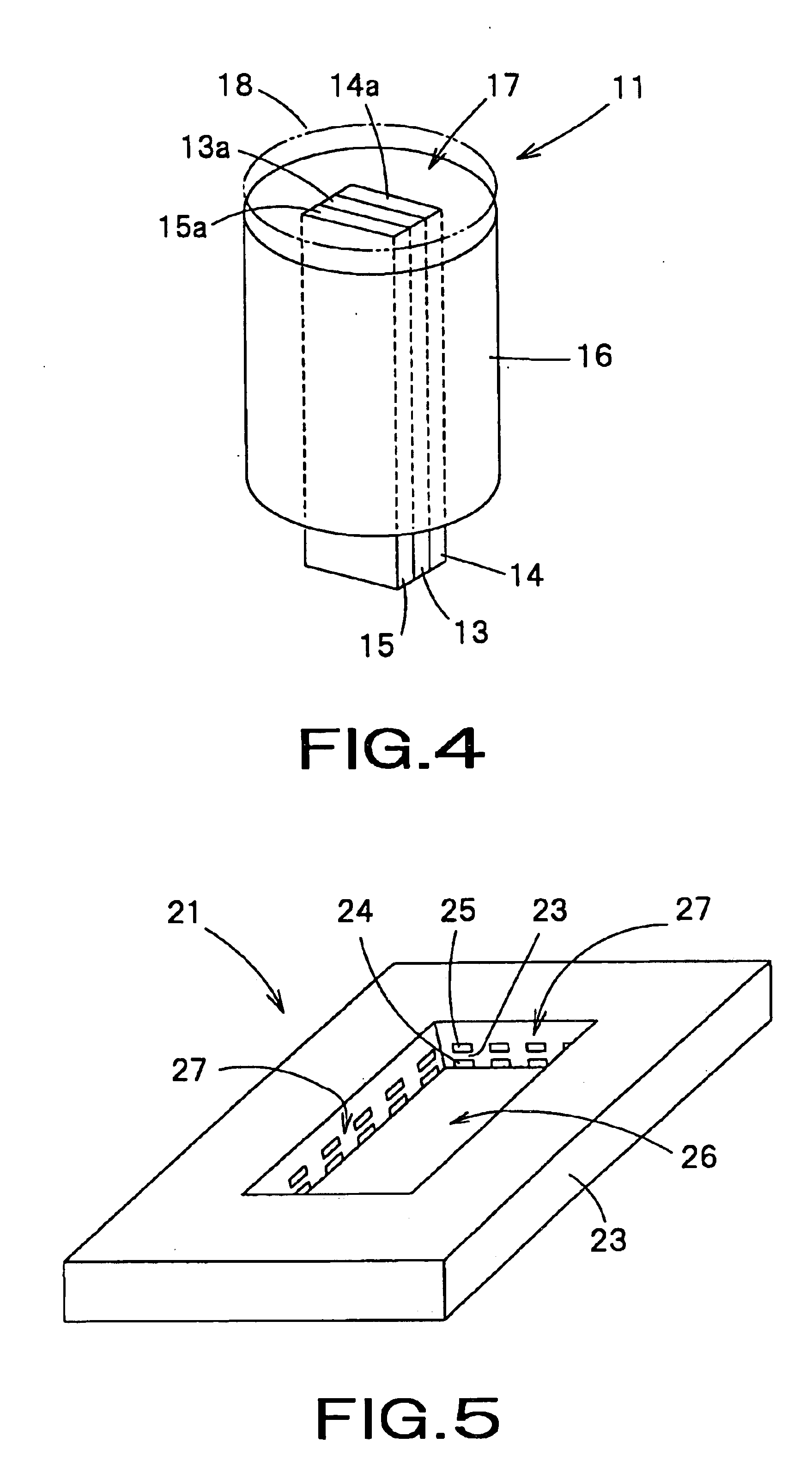Phase change-type memory element and process for producing the same
a memory element and phase change technology, applied in the direction of transistors, solid-state devices, instruments, etc., can solve the problems of reducing limiting the production technology for a reduction of the inner diameter of the contact hole, and disadvantageous temperature in the production of transistors or diodes constituting a drive circuit, etc., to achieve the effect of improving the integration density and simply producing
- Summary
- Abstract
- Description
- Claims
- Application Information
AI Technical Summary
Benefits of technology
Problems solved by technology
Method used
Image
Examples
example 1
A conductive layer of nickel was formed by sputtering on a glass substrate. The conductive layer was patterned by photography to form a stripe-shaped electrode layer having a thickness of 200 nm and a width of 1.0 μm. Next, an insulating layer of SiO2 was formed by plasma CVD on the glass substrate so as to cover the electrode layer (thickness of the insulating layer on the electrode layer: 200 nm). Thereafter, a conductive layer of nickel was formed by sputtering on the insulating layer 3. The conductive layer was patterned by photography to form a stripe-shaped electrode layer having a thickness of 200 nm and a width of 1.0 μm so that this electrode layer was located opposite to the above electrode layer through the insulating layer. Thus, a laminate structure, in which two 200 nm-thick stripe-shaped electrode layers had been separated by a 200 nm-thick insulating layer, was formed.
An insulating layer of SiO2 (thickness: 0.2 μm) was then formed by plasma CVD on the insulating laye...
example 2
A phase change-type memory element was prepared in the same manner as in Example 1, except that the thickness and the width of the two stripe-shaped electrode layers were changed to 50 nm and 0.5 μm, respectively, and the thickness of the thin layer of the chalcogenide (TeSb) alloy as the phase change recording material layer was changed to 10 nm.
For the phase change-type memory element thus obtained, writing, reading, erasing, and reading were carried out in that order in the same manner as in Example 1. As a result, the average electric resistance value during reading in ON state was about 200 Ω, and the average electric resistance value during reading in OFF state was about 800 Ω. This demonstrates that the phase change-type memory element according to the present invention can reliably function even at a low reset pulse current.
As is apparent from the foregoing detailed description, according to the present invention, a phase change recording material layer is provided on an exp...
PUM
 Login to View More
Login to View More Abstract
Description
Claims
Application Information
 Login to View More
Login to View More - R&D
- Intellectual Property
- Life Sciences
- Materials
- Tech Scout
- Unparalleled Data Quality
- Higher Quality Content
- 60% Fewer Hallucinations
Browse by: Latest US Patents, China's latest patents, Technical Efficacy Thesaurus, Application Domain, Technology Topic, Popular Technical Reports.
© 2025 PatSnap. All rights reserved.Legal|Privacy policy|Modern Slavery Act Transparency Statement|Sitemap|About US| Contact US: help@patsnap.com



